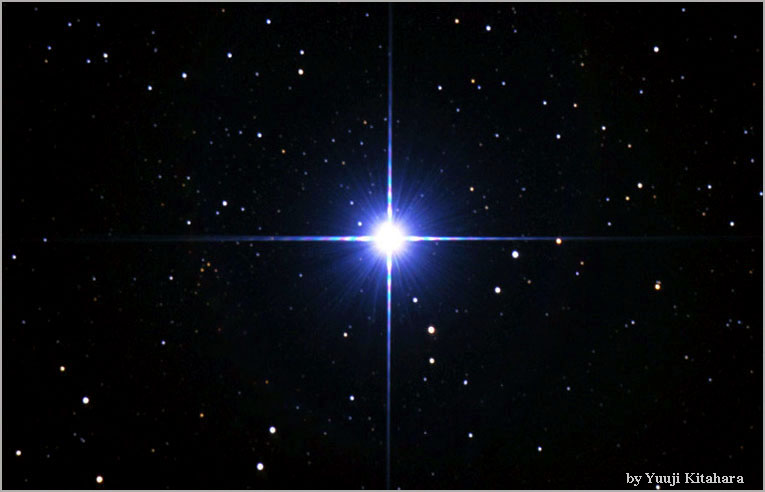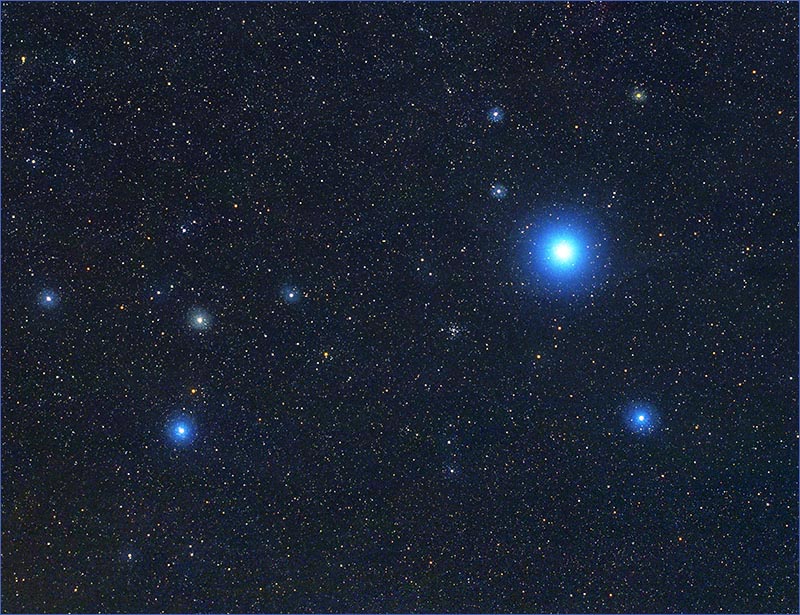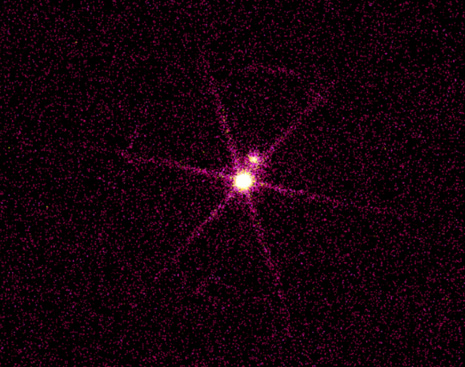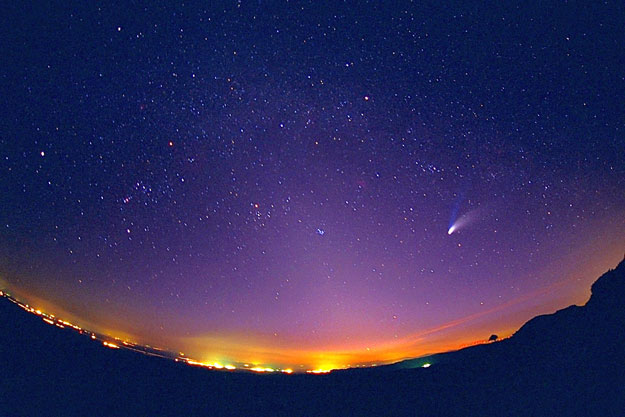
Sirius: By Garvin Peters
Sirius, which comes from the Greek word meaning "scorching", is the brightest star in our sky, with an apparent magnitude of -1.42. Although some may consider the sun the brightest star in our sky, Sirius is about twice the size and magnitude of the sun, and approximately 23 times more luminous. Deemed the "Dog Star", Sirius is atleast twice as bright as any other star known (with Canopus coming in second). However, its position as "brightest" is limited to stars only, with planets such a Jupiter being brighter.
Records of Sirius date back to ancient times. The Egyptians based their calendars on this star. When it becomes visible just before sunrise (after moving far away from the glare of the Sun), this signals the annual flooding of the Nile. The Greeks believed that the appearance of Sirius signaled a very dry summer. They also believed it caused the men to become weakand their plants to wilt. Even the Polynesians used Sirius (in addition to other bright stars) as their compass when they navigated the many islands of the Pacific Ocean.


(Above) Canis Major expressed in both natural and illustrated forms side-by-side.
Sirius is the largest star in the constellation Canis Major (which translates to Great Dog). From this, it was deemed the name "The Dog Star". Friedrich Bessel noticed that Sirius had a "wobble" in 1844. Then, in 1862, Alvan Clark discovered that this wobble was caused by a brother star to Sirius, a white dwarf star named Sirius B. Sirius B is much smaller and about 10,000 times dimmer than Sirius A, but it is extremely dense. Sirius B is about the size of Earth, but has the mass of the Sun, which explains its high density. Since the masses are fairly balanced, the two stars orbit each other every 50 years. Sirius A and Sirius B are now considered a Binary System.



(Above) Sirius A and Sirius B in comparison to each other. (each photo consists of both stars)
The star Sirius can be seen from every inhabited part of the globe that isn't above 73°. Since we are in the nortern hemisphere, Sirius is most visible to us during the winter. To find Sirius, first find Orion's belt (which consists of three consecutive stars). Follow the belt 20° degrees to the left (20° is about two fists at arm's length) and Sirius should be visible, as in the photo below

Works Cited:
http://www.janis.or.jp/users/kitahara/sww/sirius-z.jpg
http://www.space.com/scienceastronomy/brightest_stars_030715-1.html
http://en.wikipedia.org/wiki/Sirius#Observational_history
http://www.halexandria.org/dward108.htm
http://apod.gsfc.nasa.gov/apod/ap000611.html
Images:
Canis Major (illustrated): http://www.dkimages.com/discover/previews/842/25068849.JPG
Canis Major (Natural): http://www.scienceandart.com/photocanismaj.jpg
Binary Systems:
red: http://spiff.rit.edu/classes/phys230/lectures/mass/sirius_chandra.jpg
Blue: http://z.about.com/d/space/1/0/R/i/2005-36-a-full_jpg.jpg
Yellow: http://www.star.le.ac.uk/~mab/Root_folder/sirius_oct2001_revvid.jpg
Night Sky: http://apod.gsfc.nasa.gov/apod/ap000611.html
By: Garvin Peters
Comments (4)
Anonymous said
at 1:08 pm on Oct 14, 2008
Commenting for kicks, my 4th comment.
At first, I thought "Whoa, this page must be big" because I didn't see anything at first. Then I thought it was blank. Then I noticed the bar. I hate scrolling.
Is the star pronounced Serious? Orbit, history, and the star characteristics. Pretty informative. Next time, make the pictures a little smaller, no matter how purty they look.
Anonymous said
at 1:05 pm on Oct 14, 2008
I learned that the sun actually isn't the brightest star in the sky. It was interesting and had nice pictures. I thought a Harry Potter reference would make it a lot better but it was good anyway.
Anonymous said
at 1:05 pm on Oct 14, 2008
This was fun to read. Many people don't think about the pictures stars make. You're pictures were interesting to look at. Too bad we can't see all the stars from Philadelphia.
Anonymous said
at 1:00 pm on Oct 14, 2008
I didn't realize that this star is the brightest seen from earth. This is a very good page.
You don't have permission to comment on this page.